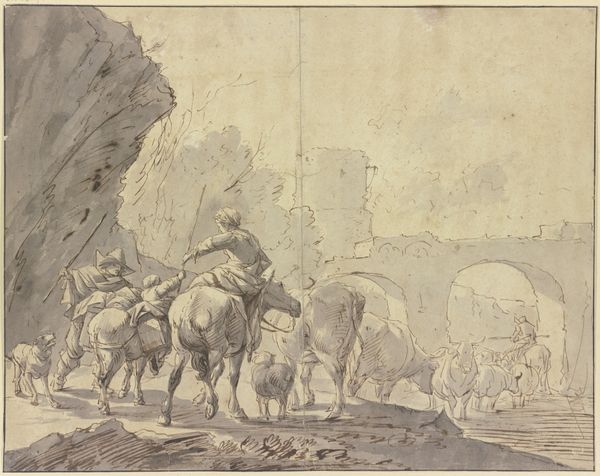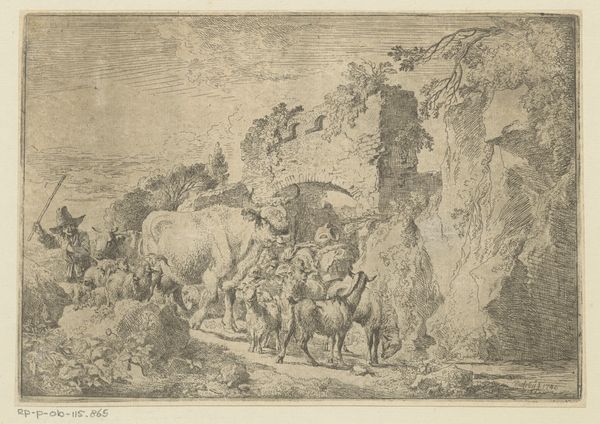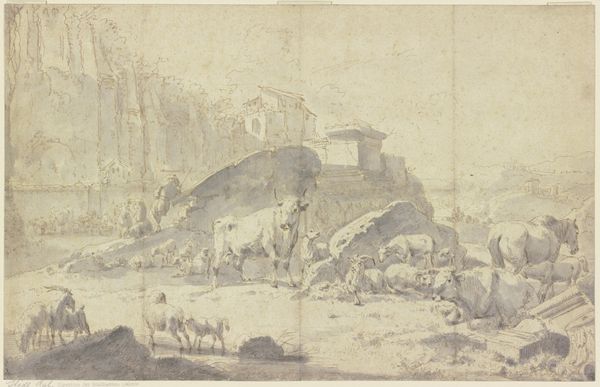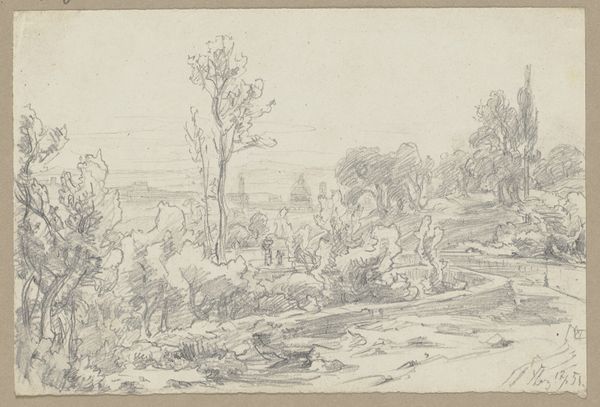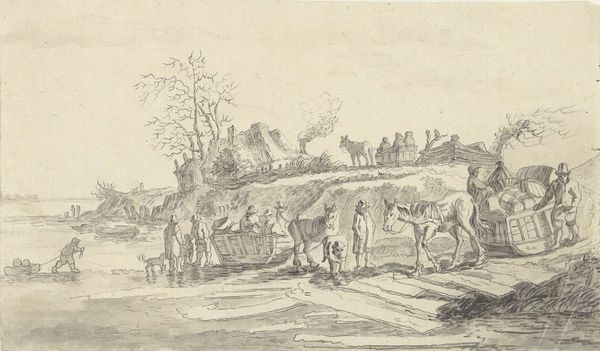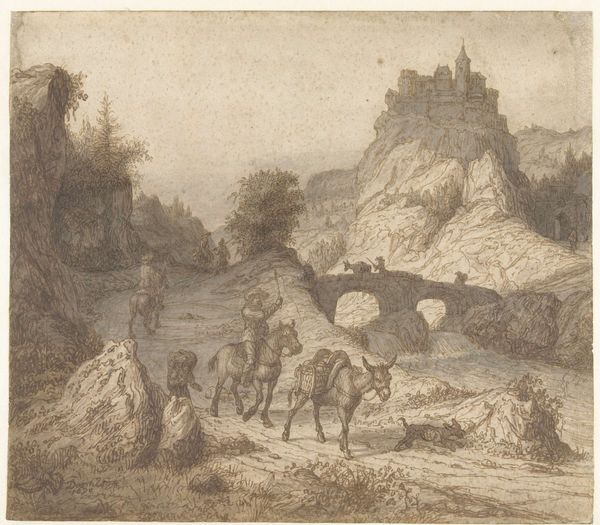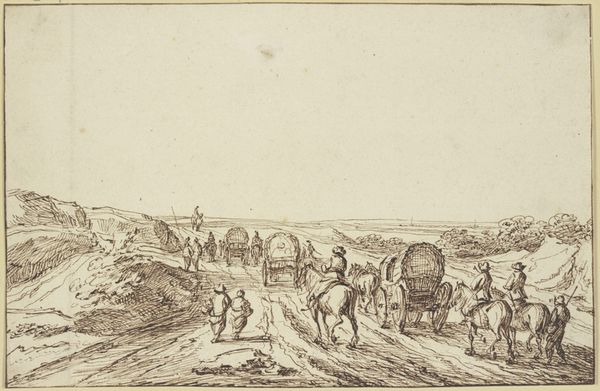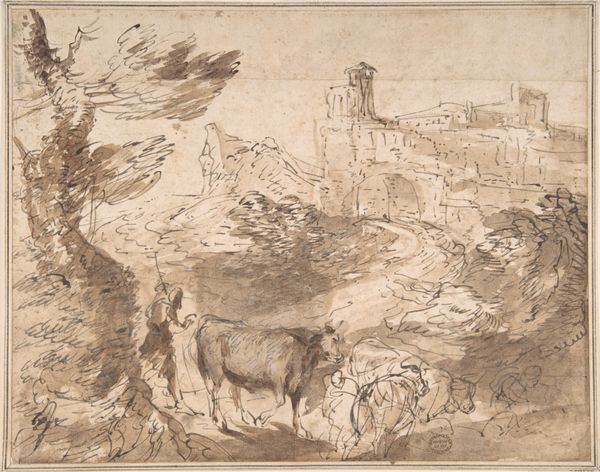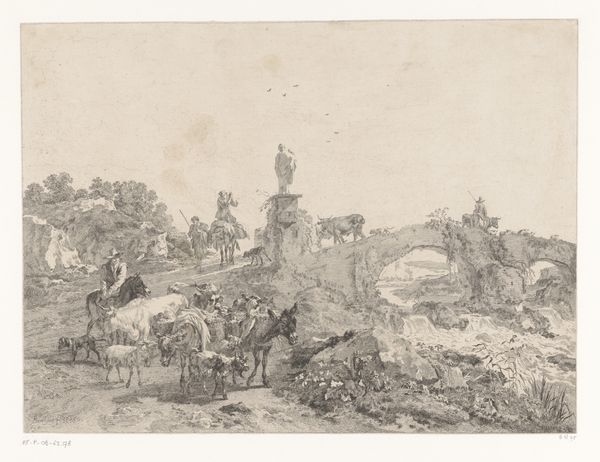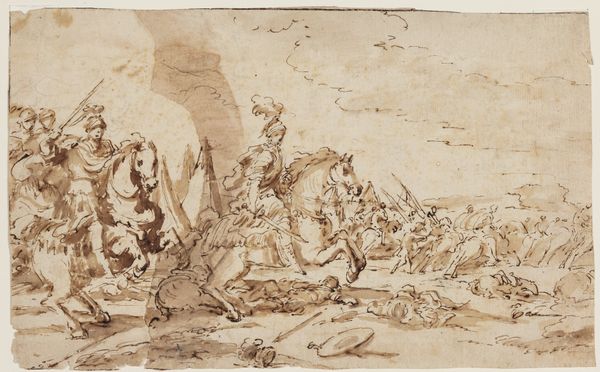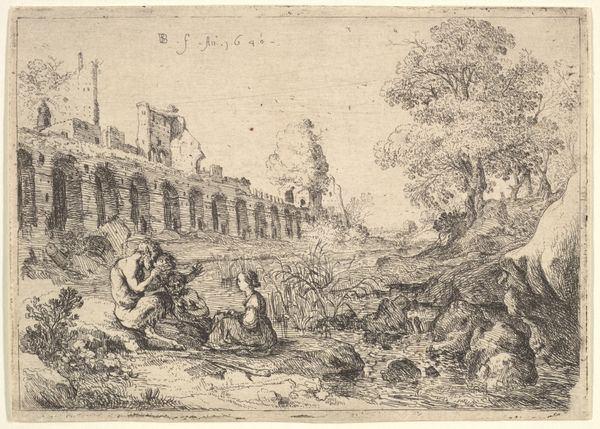
Hirtin und Hirte mit ihrer Herde in einer Ruinenlandschaft, ein antikes Fresko betrachtend
0:00
0:00
drawing, paper, ink, indian-ink
#
drawing
#
toned paper
#
light pencil work
#
baroque
#
pencil sketch
#
incomplete sketchy
#
landscape
#
possibly oil pastel
#
paper
#
ink
#
german
#
underpainting
#
indian-ink
#
pen-ink sketch
#
14_17th-century
#
watercolour illustration
#
pencil art
#
watercolor
Copyright: Public Domain
Curator: This pen and ink sketch, titled "Hirtin und Hirte mit ihrer Herde in einer Ruinenlandschaft, ein antikes Fresko betrachtend" by Johann Heinrich Roos, depicts shepherds and their flock in a landscape punctuated by the remnants of Roman architecture. The drawing is currently held in the Städel Museum. Editor: There's something so ethereal about it, almost like a memory fading at the edges. The monochromatic tones and sketchy quality lend a dreamlike atmosphere, a kind of bucolic nostalgia. Curator: Roos's handling of materials speaks to an interesting negotiation between high art ideals and the day-to-day realities of production. The ink and paper are relatively accessible materials, indicative of a certain practicality, even while depicting a somewhat romantic scene. Do you notice the toned paper underneath the drawing? Editor: I see it now; it's adding a layer of warmth and antiquity. Roos is situating this scene within a very specific historical lineage. These kinds of pastoral images often served a function within elite circles, didn't they? Nostalgic reminders of a supposedly simpler life even as wealth and power consolidated in urban centres. Curator: Exactly. The art market played a crucial role in constructing and perpetuating this ideal. Patrons collected these scenes to, as you suggest, affirm certain values and reinforce social hierarchies, transforming the representation of labour and leisure into valuable commodities. How was the artistic style affected? Editor: The composition directs our gaze. The figures are deliberately placed, the inclusion of the ancient fresco creates a kind of visual layering—past within the present, echoing across time. The art becomes a way to show connections between contemporary patrons and the revered Classical world, cementing the patron's legitimacy. Curator: And in this way the act of creating or appreciating art serves to define status and cultural identity. Even seemingly simple landscapes operate within complex systems of power. Roos' sketch encapsulates this intersection quite neatly. Editor: Precisely, that gives me a much richer reading of its initial simplicity! Thanks for revealing a deeper look.
Comments
No comments
Be the first to comment and join the conversation on the ultimate creative platform.
